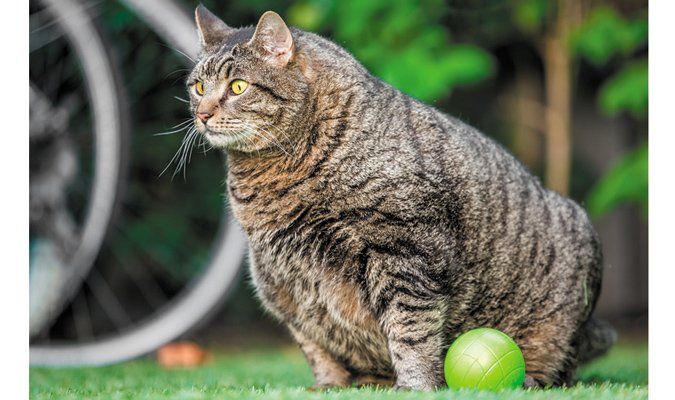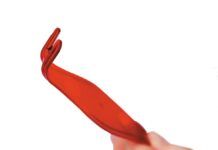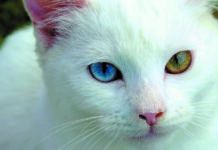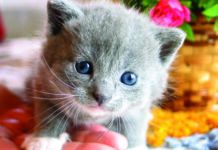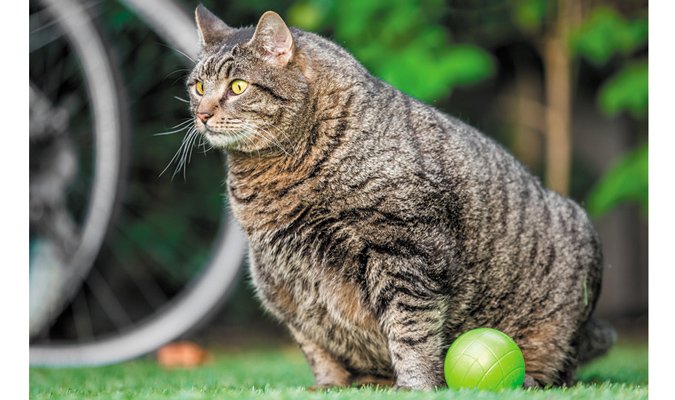

© Ian McGlasham | Bigstock
Many more cats are overweight than in the past. The most recent numbers indicate that up to 66 percent of our cats carry around excess pounds — two out of three felines. The chances for adverse health effects are significant.
“The most common health risk for overweight cats is diabetes,” says Deborah Linder, DVM, a board-certified veterinary nutritionist who heads the Tufts Obesity Clinic for Animals. “I get very worried that an obese cat is a diabetic waiting to happen, with insulin in her future, unless we do something.
“Dogs tend to get diabetes that is more similar to type 1 in people,” Dr. Linder says. “But cats are more likely to have diabetes that is similar to type 2, which is more associated with extra weight.”
Other health risks of overweight in cats: arthritis and dermatitis. “Dermatitis is a big one,” Dr. Linder says. “Sometimes it’s simple mechanics. Cats are such great groomers, but if they physically can’t reach around and groom the way they should, it can become an issue.”
Undergoing anesthesia, if needed, is riskier for an overweight cat, too, as is prescribing medications. “Depending on the medication,” Dr. Linder says, “we don’t exactly know how to dose a cat carrying around too many pounds. If we prescribe an amount based on the obese weight, we might give too much, but if we prescribe according to ideal weight, we might give too little. And some drugs have a rather narrow margin of safety. It can be very challenging.”
Inherent in all of these health challenges, Dr. Linder says, is that they often “come with not-nice expenses.”
Prevention
The best time to deal with excess weight is before it happens. The pivotal juncture for weight control in a cat’s life often comes when it is spayed or neutered. “That can decrease calorie requirements by up to a third,” Dr. Linder says, “which is why by one year of age many cats are ballooning up. They’re being fed the same number of calories but need much less. When you have a cat spayed or neutered,” she advises, “you want to reevaluate the diet you’re feeding. Keep with kitten food throughout the first year, but choose one lower in calories if you see your pet starting to gain weight. Calories are always listed on the label now.”
If the prevention ship has sailed
If your cat was spayed or neutered some time ago and you believe she is already overweight, there are a number of steps to take, in a specific order.
1|Bring your cat to the veterinarian. “Don’t wade into a weightloss program without checking in,” Dr. Linder says. “You want to get a professional assessment on whether your cat actually is overweight and, if so, to what degree. You also want a professional opinion of how much food to feed at what calorie level.” It helps to keep a diet journal for a while before the doctor’s visit, the doctor says, writing down everything you feed your pet — treats, table scraps, and so on. That makes it easier for the veterinarian to understand the nature of the problem. It will also help the doctor decide whether it’s okay to feed food from the store or instead feed a veterinary therapeutic diet that will contain more nutrients with fewer calories. If your cat is obese and needs a dramatic reduction in calories without getting shortchanged on nutrients, a veterinary therapeutic diet may be the way to go.
2|If the vet says your cat is overweight don’t free feed, that is, “don’t just put out a bunch of food and refill the bowl when it’s empty,” Dr. Linder says. “Measure it out so you know how many calories you’re feeding. I have never been able to get a cat to lose weight by letting her eat as much as she wanted.”
3|Put food into puzzle feeders and other interactive toys, and use timed feeders that go off at 5 am — an hour of the morning when a cat who’s cranky about not getting as much food as she used to might start batting your head. “This helps cats not see the people who take care of them as their source of food,” Dr. Linder says, and makes a dieting cat much easier to be around.” She uses it for her own cats. “It took a while,” the doctor says, but they have learned to go bug the feeder and not me. It’s set to go on at 5 am. There is a tray that spins to allow access to the food.”
4|Keep physical activity front and center. It’s important not just for slimming down but also for environmental enrichment,” Dr. Linder says. “It will make the cat less fixated on food. “Laser lights are great, toy mice, — anything to keep the cat moving. Too many people free feed, go to work, come home, and free feed again. The cat eats her meal in two minutes and spends the rest of her time sleeping.”

